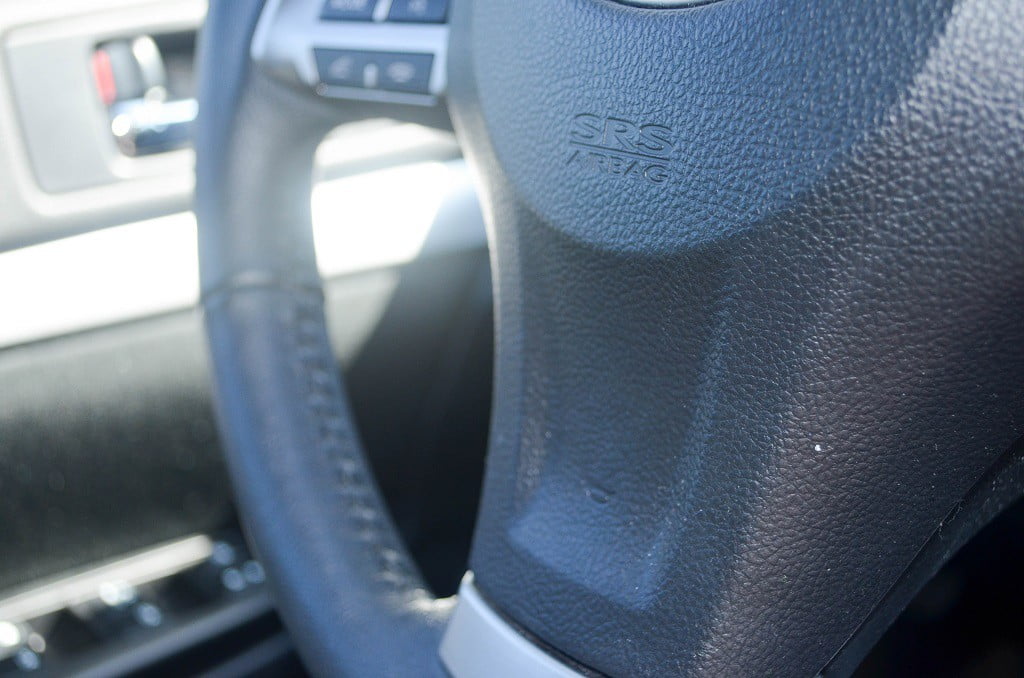How important is safety to you when shopping for a new vehicle? Every new car must meet certain federal safety standards, but that doesn’t mean that all cars are equally safe. Many automakers offer vehicle safety features beyond the required federal minimums, providing even more protection for vehicle occupants.
Consider the following vehicle safety features when purchasing your next car.
[hr_invisible]
IIHS Vehicle Safety Ratings
The Insurance Institute for Highway Safety (IIHS) tests evaluate two aspects of safety: crashworthiness — how well a vehicle protects its occupants in a crash — and crash avoidance and mitigation — technology that can prevent a crash or lessen its severity. To determine crashworthiness, IIHS rates vehicles good, acceptable, marginal or poor, based on performance in five tests: moderate overlap front, small overlap front, side, roof strength and head restraints. In the area of crash avoidance and mitigation, IIHS assigns vehicles with available front crash prevention systems ratings of basic, advanced or superior, based on the type of system and performance in track tests. Vehicle safety ratings can be found on their website, iihs.org.
[hr_invisible]
ESC and Vehicle Structural Design
Electronic stability control (ESC) and strong roofs help prevent rollover deaths. ESC technology helps prevent the sideways skidding and loss of control that can lead to rollovers and it reduces the risk of fatal single-vehicle rollovers by more than 70 percent. As of the 2012 model year, all passenger vehicles must have the technology.
Stronger roofs reduce the risk of a fatal or incapacitating injury when a vehicle rolls over, in part because stronger roofs reduce the chance of being ejected from a rolling vehicle. Even with standard ESC on all new vehicles, some rollovers will still occur, so it’s important to have a strong roof.
A good structural design also has a strong occupant compartment, known as the safety cage, as well as front and rear ends designed to buckle and bend in a crash to absorb the force of the crash.
[hr_invisible]
Vehicle Size and Weight
All other things being equal, occupants in a bigger, heavier vehicle are better protected than those in a smaller, lighter vehicle. Both size and weight affect the forces people inside a vehicle experience during a crash. The magnitude of those forces is directly related to the risk of injury.
In the case of size, the longer distance from the front of the vehicle to the occupant compartment gives a bigger vehicle an advantage in frontal crashes, which account for half of passenger vehicle occupant deaths. The longer that distance, the bigger the crush zone, and the lower the forces on the occupants.
Weight comes into play in a collision involving two vehicles. The bigger vehicle will push the lighter one backward during the impact. As a result, there will be less force on the occupants of the heavier vehicle and more on the people in the lighter vehicle. Heavier vehicles also fare better in some single-vehicle crashes because they are more likely to move, bend or deform objects they hit.
[hr_invisible]
Airbags
Airbags are one of the most important safety innovations of recent decades. They provide crucial cushioning for people during a crash. The devices are normally hidden from view but inflate instantly when a crash begins. Thanks to the advocacy of IIHS and others, frontal airbags have been required in all new passenger vehicles since the 1999 model year. Side airbags aren’t specifically mandated, but nearly all manufacturers include them as standard equipment in order to meet federal side protection requirements.
Both frontal and side airbags save lives. Frontal airbags reduce driver fatalities in frontal crashes by 29 percent and fatalities of front-seat passengers age 13 and older by 32 percent. Side airbags that protect the head reduce a car driver’s risk of death in driver-side crashes by 37 percent and an SUV driver’s risk by 52 percent.
Engineers keep finding new ways to use airbags. Some vehicles now have rear-window curtain airbags to protect people in back seats or front-center airbags to keep drivers and front-seat passengers from hitting each other in a crash. There are also inflatable safety belts aimed at reducing rear-seat injuries.
[hr_invisible]
Other Safety Features
- Anti-lock Brakes: In a vehicle that has antilock brakes, a sensor located at each wheel detects when the wheel stops turning and starts to skid. As the wheel begins to lock, the antilock system relieves the pressure just enough to allow the wheel to turn again. This allows you to steer while slowing the vehicle. The vehicle’s computer performs this pulsing action faster than humans can manually pump the brake pedal.
- Safety Belts: For drivers and front-seat passengers, using a lap and shoulder belt reduces the risk of fatal injury by 60 percent in an SUV, van or pickup and by 45 percent in a car.
- Daytime Running Lights: These lights automatically turn on with your car. By increasing the contrast between a vehicle and its backgrounds and making the vehicles more visible to oncoming drivers, these lights can prevent daytime accidents.
- On-the-Road Experience: Other design characteristics can influence injury risk on the road. Some SUVs are prone to rolling over. “High performance” cars typically have higher-than-average death rates because drivers are tempted to use excessive speed.
Source: IIHS
[hr]
Did you know?…
- The number of people killed in motor vehicle crashes has been falling. Beginning in 2008, the annual tolls have been at their lowest levels since 1975, when the U.S. Department of Transportation began collecting detailed fatality data.
- Fatality rates per population and per mile traveled have dropped even more rapidly. The crash death rate per population has fallen by half since 1975, while the fatality rate per 100 million miles traveled went from 3.35 in 1975 to 1.08 in 2014.
- More men than women die in motor vehicle crashes. Men typically drive more miles than women and are more likely to engage in risky practices.

